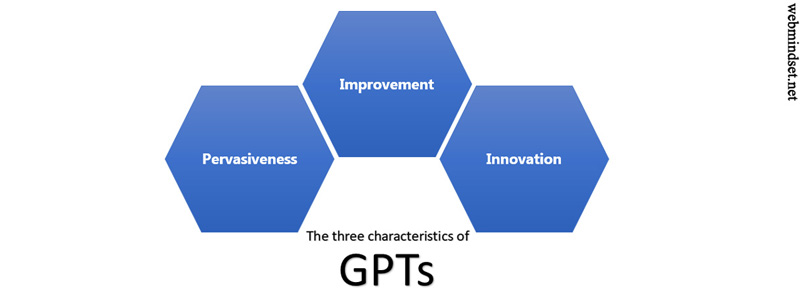In the previous article, I have quoted a few excerpts from the introduction of Bhaskar’s book on curation. Here you can find some of the core points of the first chapter of the books: The long boom in everything.
Bhaskar dedicates the second chapter to the context of the curation. He tries to depict the last centuries as a continuous trend of productivity growth in every aspect of the global economy.
He cites various numbers and statistics from the early days of industrial revolution to the present to show the scarcity giving its way to the abundance.
Computation and connectivity as general purpose technologies (GPTs)
The concept of General Purpose Technologies (GPTs) was introduced by Bresnahan and Trajtenberg in 1995-6. They argue that a GPT should have the following characteristics:
- Being pervasive in various sectors
- Being able to improve over time
- Help to foster innovation and making new products and services

Bhaskar believes that technology and connectivity can be considered as a GPT:
Productivity growth has always relied on general purpose technologies like steam and electricity to unlock new waves. There is a good argument that computation and connectivity are just such a GPT and that we are currently living through its consequences.
Based on the statistics and assumptions he provides, Bhaskar argues that we are not reached to the secular stagnation that was predicted to happen soon.
Data creation and data storage are not the only territories affected by the digital technology
This is on the primary ideas presented in the first chapter of Bhaskar’s book.
Here’s how he emphasizes on this point:
We think of digital technology, among other things, as leading to a huge boost in data storage and data creation.
This is true, but it is far from the only way digital technology has transformed conditions of scarcity into conditions of abundance.
Digital tech has led to vast supply increases and price falls in communications, access to markets, inventory space, content creation and publishing, software, consumer choice, services, and processing power.
In each of these areas the past twenty years have seen the dominant trend switch from scarcity to excess.
This abundance has led to rise of the curation as a field of expertise. And this is the way Bhaskar convinces his readers to follow him thorough his book.






